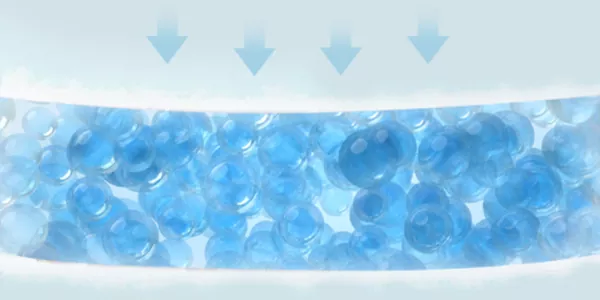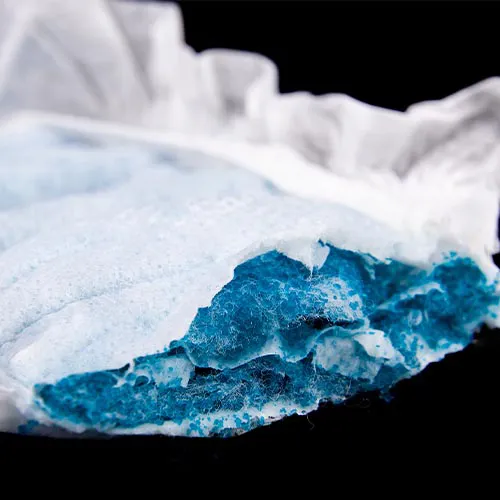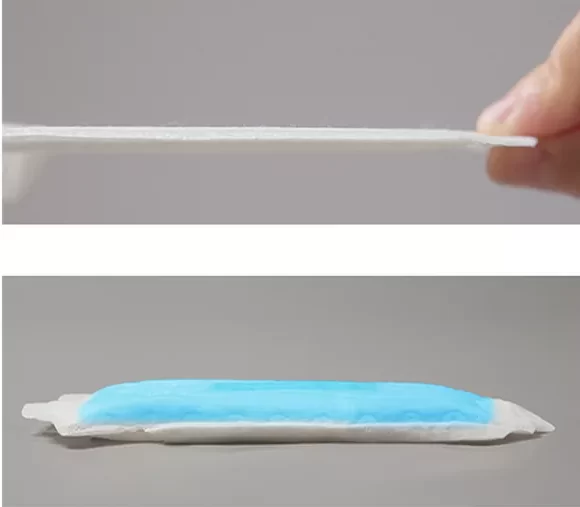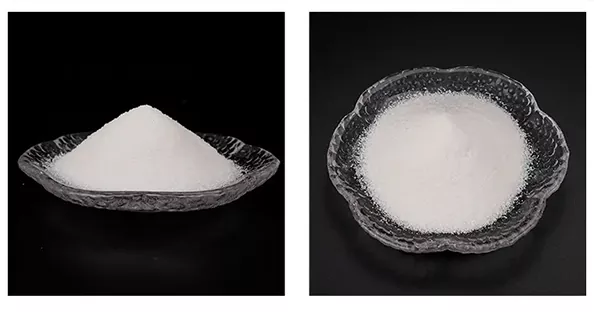Menstruation is a monthly occurrence for women and girls of childbearing age. During this time, the body sheds the uterine lining, which can lead to blood and other fluids being released from the body.
This is a huge problem for most girls and women. In the past, girls and women used to treat their menstruation period with the help of cloth and other unhygienic means which caused many diseases. But in modern days, thanks to sanitary napkins and other feminine hygiene products, women and girls can manage their periods with ease and without worry.
But have you ever thought about the working mechanism of sanitary napkins and incontinence pads?
How do they absorb a huge amount of liquid? All this is done by one key ingredient i.e. SAP (superabsorbent polymer). In this blog post, I will tell you about SAP, its benefits, its importance, and common vendors of SAP in the sanitary pads industry. So let’s get started.

What is SAP (Superabsorbent polymer)?
SAP is a synthetic polymer that has the ability to absorb and retain large amounts of liquid. it is usually found in the form of small beads or granules. When these beads come into contact with a liquid, they swell up and turn into a gel-like substance. This gel-like substance is what allows SAP to absorb and retain large amounts of liquid.
The most common super absorbent raw material used in personal care products is sodium polyacrylate. It is the Sodium salt of Acrylic acid. Sodium polyacrylate is a water-soluble substance that can absorb up to 300 times its own weight in water. This makes it the perfect material for use in products like feminine pads and incontinence pads, which need to be able to absorb large amounts of fluid.

How SAP is used in Sanitary napkins?
In sanitary pads, superabsorbent polymers are in the form of SAP paper. Superabsorbent polymer is applied to a tissue or paper and then this paper is placed in the absorbent core of the pad. For a better understanding of how superabsorbent polymers are used in sanitary pads, we first need to comprehend the anatomy of a sanitary napkin. A typical feminine napkin has four main layers:
Acquisition layer – This is the top layer and it is in direct contact with the skin. It is made of a soft, comfortable, and dry material i.e. polypropylene that helps to keep the skin dry. It has a porous structure.
Distribution layer – The second layer is the distribution layer. The superabsorbent polymer cannot absorb the whole fluid in a blink of an eye so this layer absorbs the fluid and distributes it evenly to the third layer i.e. Core layer. The distribution layer is made of a non-woven fabric that has a high wicking ability i.e. it can quickly draw fluid away from the acquisition layer and distribute it evenly throughout the napkin.
Absorbent core – The third layer is the absorbent core and it is the key layer in any pad. This is where the SAP is located. It is placed in the form of a paper, which is called SAP paper, surrounded by fluffed cellulosic pulp. The combination of this paper and cellulose pulp forms an absorbent core that can quickly absorb and retain large amounts of fluid.
Barrier layer – The bottom layer is also known as the barrier layer. It is made of a leak-proof material i.e. polyethylene (PE). This layer prevents the fluid from leaking out of the napkin.
So, this is how superabsorbent polymers are used in sanitary pads. SAP paper is placed in the absorbent core of the pad and it helps to quickly absorb and retain large amounts of fluid.

What are the benefits of using superabsorbent polymers in Sanitary Napkins, Baby Diapers, and incontinence pads?
There are many benefits of using superabsorbent polymer in personal hygiene pads. Some of the key benefits are:
1. Quick absorption – As SAP can absorb up to 300 times its own weight in water, it helps to quickly absorb and retain large amounts of fluid. They are also known for their higher absorption capacity
2. Odor control – Another benefit of using SAP is that it helps to control odor. The gel-like substance that is formed when these superabsorbent polymers come into contact with liquid, helps to trap the odor-causing bacteria. This prevents the bad odor from being emitted.
3. Leakage control – The SAP polymer locks the fluid by creating a gel-like substance. This helps to prevent leakage.
4. Comfort – The ultimate comfort of the sanitary pads depends on how quickly it can absorb the fluid. As SAP can absorb the fluid very quickly, it helps to keep the user comfortable by preventing wetness.
5. Long-lasting – The liquid retention capacity of these polymers is higher than that of cellulose fibers. So they can retain the liquid for a longer period of time.
SAP is a super-absorbent polymer that has many benefits. It helps to quickly absorb and retain large amounts of fluid, control odor, and prevent leakage. It is also soft and gel-like in nature, making it gentle on the skin. Pads that contain SAP are long-lasting and cost-effective in the long run.

Who are the leading vendors of Super absorbent polymer?
There are many vendors of SAP all across the globe. Each vendor has its own specialty and area of expertise. However, the following two vendors are the most popular and leading vendors in this industry:
SUMITOMO SEIKA CHEMICALS CO., LTD. – Sumitomo Seika Chemicals Co., Ltd. is a Japanese company that manufactures and sells a wide range of chemicals. The company has more than 75 years of experience in manufacturing SAP. It offers super-absorbent polymer under the brand name “Aqua Keep”. The company manufactures “Aqua keep polymer” for various applications such as hygiene products, construction materials, and agriculture. They also make super absorbent polymers for industrial usage.
For hygiene products, “Aqua Keep” is used in baby diapers, adult incontinence products, and menstruation pads. It can absorb up to 1000 times its own weight in water.
SANYO CHEMICALS INDUSTRIES LTD. – Sanyo Chemical Industries Ltd. is also another Japanese company that manufactures and sells chemicals, plastics, and other materials. The company started its hands dipped in SAP manufacturing in 1978. The good thing about their commercial polymers is their high locking capacity. This means that once the polymer comes in contact with the liquid, it can lock it in its place and prevent leakage.
Their polymers are used in a wide range of applications like hygiene, food & transportation, pet, medicine, and agriculture. The common hygiene products in which these polymers are used are baby diapers, women’s hygiene towels, and adult incontinence products.
These are the two leading vendors of super absorbent polymers. The Sanyo SAP has a high water locking capacity while the Sumitomo Seika SAP has a fast absorption rate. So most of the personal care pad manufacturers use Sumitomo Seika SAP in their pads to prevent staining of clothes. On the other hand, baby diapers are often used in combination with both.
FAQs related to SAP & Sanitary Napkins
The amount of absorption in a sanitary napkin does not depend on its thickness. The absorbent core of a napkin contains layers of SAP and fluff pulp. The number of layers and the type of material used in each layer determines the absorption capacity of the napkin.
There are no reported side effects of using SAP in menstruation pads. The material is safe to use and is gentle on the skin.
It is recommended that you change your sanitary napkin every 4-6 hours, or as needed. You should also change your napkin after every bathroom break.
SAP is a synthetic polymer that is made from acrylic acid and sodium hydroxide. Cellulose is a natural fiber that is derived from plants. SAP is more absorbent than cellulose and can hold up to 300 times its weight in water. Cellulose is less absorbent than SAP and can only hold up to 10 times its weight in water.
Fleece pulp + sap is a layer of fleece pulp that is combined with SAP. This combination provides better absorbency than SAP paper alone. SAP paper is a layer of paper that is coated with SAP.
SAP helps in preventing leaks by absorbing the menstrual fluid and expanding to form a gel. This gel blocks the pores in the napkin and prevents the fluid from leaking out.
